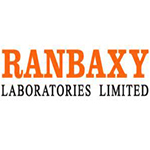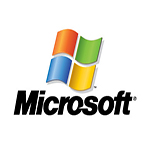Embedded software plays an integral role in the electronics. Embedded software’s principal role is not Information technology, but rather the interaction with the physical world. It’s written for machines that are not, first and foremost, computers. An embedded system refers to any electronic system that uses a CPU chip but that is not a general-purpose workstation, desktop or laptop computer. Embedded systems generally use microprocessors or sometimes custom-designed chips or both. It is used in various applications such as vehicles, machine tools and consumer electronics. Embedded software is ‘built in’ to the electronics in cars, telephones, audio equipment, robots, appliances, toys, security systems, pacemakers, televisions and digital watches. This software becomes very critical in applications like airplanes, missiles, process control systems, and so on. .
An embedded system is a computer system designed to perform one or a few dedicated functions often with real-time computing constraints. It is embedded as part of a complete device often including hardware and mechanical parts. By contrast, a general-purpose computer, such as a personal computer, is designed to be flexible and to meet a wide range of end-user needs. Embedded systems control many devices in common use today. These are controlled by one or more main processing cores that are typically either a microcontroller or a digital signal processor. The key characteristic is however being dedicated to handle a particular task, which may require very powerful processors. For example, air traffic control systems may usefully be viewed as embedded, even though they involve mainframe computers and dedicated regional and national networks between airports and radar sites. (Each radar probably includes one or more embedded systems of its own.) Since the embedded system is dedicated to specific tasks, design engineers can optimize it reducing the size and cost of the product and increasing the reliability and performance. Some embedded systems are mass-produced, benefiting from economies of scale.
Physically, embedded systems range from portable devices such as digital watches and MP3 players, to large stationary installations like traffic lights, factory controllers, or the systems controlling nuclear power plants.
Complexity varies from low, with a single microcontroller chip, to very high with multiple units, peripherals and networks mounted inside a large chassis or enclosure. In general, “embedded system” is not a strictly definable term, as most systems have some element of extensibility or programmability. For example, handheld computers share some elements with embedded systems such as the operating systems and microprocessors which power them, but they allow different applications to be loaded and peripherals to be connected. Moreover, even systems which don’t expose programmability as a primary feature generally need to support software updates. On a continuum from “general purpose” to “embedded”, large application systems will have subcomponents at most points even if the system as a whole is “designed to perform one or a few dedicated functions”, and is thus appropriate to call “embedded”.
An embedded system targeted at network applications are designed to do some specific task, rather than be a general-purpose computer for multiple tasks. Some also have real-time performance constraints that must be met, for reasons such as safety and usability; others may have low or no performance requirements, allowing the system hardware to be simplified to reduce costs. Embedded systems are not always standalone devices. Many embedded systems consist of small, computerized parts within a larger device that serves a more general purpose. The program instructions written for embedded systems are referred to as firmware, and are stored in read-only memory or Flash memory chips. They run with limited computer hardware resources: little memory, small or non-existent keyboard and/or screen.

































